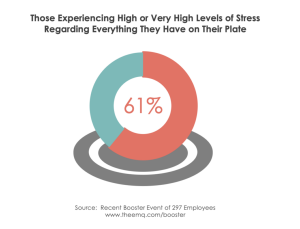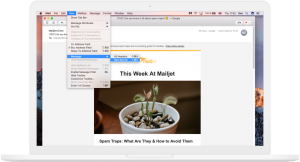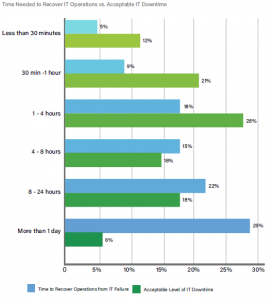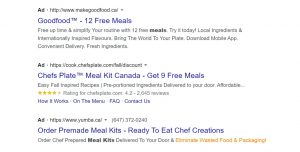Sending an automated, calibrated series of messages to get a customer to take action is nothing new. However, startups often consider the value of their marketing to be the value of their product, and sometimes consider “marketing” (particularly anything “outbound”) to be either ancillary, or outright annoying to any potential customer.
Email sequences, however, can be tremendously useful both for encouraging initial purchases or sales appointments, or to encourage use or retention of a product.
Try signing up for a Twitter account, Facebook account, or LinkedIn account and see if you’ll get sequential, calibrated email follow up in your inbox. You will. Go ahead an make a purchase from colossal eCommerce companies like Amazon, Priceline, or eBay, and see if you find yourself getting emails to encourage future purchases. You will.
Yet some of us think auto-responders might be “too pushy” or “aggressive,” and that our product should be reason enough for users to come back and engage / purchase, time and time again. Hint: If Facebook (maybe the stickiest “killer app” on earth) uses email strategically to encourage engagement, you should, too. In this article we’ll cover some of the basic building blocks for doing just that.
When conducting your email campaign, there are three main elements (or “ingredients”) to consider if you’re to make it a success, and ensure that your messages are read and actions are taken from the subscriber. Like a balanced diet, a healthy mix of these ingredients ensures that you nurture subscribers properly, but still swing for the conversions you’re ultimately looking for.
Ingredient 1) Education and Information
Telling business owners and managers to provide information about their business is perhaps like telling a fish to swim, but you’d be surprised at how many people take this simple step for granted. Communicating what it is that your business is about in a way that is both exact and beneficial for your operation is an art form in itself — and could be the subject of hundreds (even thousands) of individual articles. But there is an easy way of incorporating this ingredient into your email marketing campaign mix, and it is essential that you do it right.
The thing to keep in mind is: your email marketing campaigns are not the same as your website. The information you give will have to be succinct, summary and relatively short, at least when compared to the “About” section on your official online presence. This is no time for mission statements, you need to convey exactly what it is your specific product/service is about and at the same time try to anticipate why somebody might be interested. Do you have some interesting statistics concerning the subject of your email? Or some facts that might give your product a great context to sell it in? Here is the time to utilise those little nuggets. The more you know about your prospects, the more you can educate them in the way they’d like most, so look into using what you know about them (industry, company size, interests, etc…) to help tailor your education.
Remember, this is not the same as a fully-fledged page-long description. More often than not (depending on your own circumstances) your email will contain links to more substantial outlets of information for your readers to go to if they need more.
There are a million and one ways to do this the right way, but just because this part of the email is a staple of almost any sales-orientated communication, doesn’t mean that you can discard this from the realm of prolonged thought and contemplation. Remember: it’s an email. Not a doorstep chat or a conference talk. Treat it as such to make the most of your email campaign.
Application: Take your reader on a journey of learning about your product or service, and the benefits it brings. Early in the sequence, it might be an important, succinct overview. Then, you might walk through individual product features in each individual message, always grounding the lessons or tutorials on “what’s in it for them.”
Ingredient 2) Social Proof/Testimonial
This is perhaps the ingredient in your email marketing campaign that is likely to make the biggest difference. Having somebody else verify that the product/service that is being sold to you is actually worth the paper it’s written on (or screen, let’s not get picky) is like gold dust to those in business. Having somebody separate and unaffiliated with the organization endorse and support your product means that any potential buyer has literal proof that what you offer is of some substance.
This doesn’t have to be someone of particular repute either, ordinary customers (who have been in the same position as the reader) often mean more and are less obviously affiliated with the organisation/business in question. Although a well-placed celebrity endorsement can be extremely valuable. The rich and famous have tremendous clout and brand power and sales evidence from all over the globe has demonstrated that a simple thumbs up from a famous face can work wonders on a business’s profits and takings. Don’t make the celebrity endorsement your sole concern in this regard however, academics and relevant experts often make even better patrons in email marketing campaigns, dispelling any prior concerns a reader might have over a product’s ability to perform to specification.
Testimonies are not optional if you want your communications to be seen as valid, well meaning and of some worth. People are sceptical of salespeople who appear to be out to make a quick buck and nothing else, social proof is proof that you and your campaign are not that. To leave them out is to risk your email marketing campaigns ending up in the trash.
Application: Make a subscriber know that what you have is for them. Use case studies of other clients or customers who’ve gleaned specific benefits from your work. This could be in the form of direct testimonials, but it also might be a feature explanation seen through a successful client use-case. The more relevant the testimonials or case studies, the more conducive they are to generating sales, which is one more reason to segment and communicate differently to your list segments earlier rather than later.
Ingredient 3) Calls To Action
What exactly is the point of this email that I’m reading? What am I supposed to do with this information? They sound like a patronizing questions, but there are companies (big, successful ones aren’t excluded from this) who conduct email marketing campaigns without those questions in mind and the consequences are disastrous: wasted time and (even more importantly) wasted money.
This part of the email should be the culmination of the previous two pillars and the work they’ve done for you. To put it in inappropriately aggressive sales lingo — if the first two pillars have weakened your opponent into a lucid salesperson-friendly state, then the “Call To Action” should function as the killer blow. Whether it’s purchasing a product, making an appointment, requesting a quote or provoking a log-in on your website (of which the reader is already member), the purpose of the email should always remain clear, even if you’re not outlining it in every single paragraph of your communication. But it should be explicit, an email that requires somebody to search around for the point isn’t going to be a successful one.
Don’t be shy. Just don’t come across too pushy either. There is a fine balance, but we can all instinctively distinguish between the cocky “big talker” and the measured – but assertive – individual who is most likely to get the response your campaign is intended to provoke. If you ever struggle with the tone and style of prose in your email, always relate your words to real-life examples of people trying to sell you something. I find that always helps. Sign up for Wayfair or HubSpot to see how successful eCommerce and consultative sales companies use “calls to action” in a professional way that still delivers results.
Application: You have to close. Whether it’s a click to a sales page, a reply email, an appointment form filled out, or an active user who’s eager to keep paying after their 30-day free trial – your campaigns have a job to do, and you’ve got to direct your prospect accordingly.
Conclusion
These three “pillars” of emailing marketing are not the sole considerations for a every campaign, a lot of what you’re doing will depend on your own circumstances and aims. They are, however, almost universally applicable as a foundation upon which to lay the details of your outbound messaging. If you’re missing one altogether, you might just be missing the boat when it comes to converting prospects with email.
If you don’t have prospect-to-customer sequences in place at all, or any kind of retention emails in place for existing customers, this article (in addition to following the email marketing example of successful companies) will give you some solid building blocks to get started with. If you have a sequence in place, take a look at it through the lens of the three “ingredients” and see if anything’s missing altogether, or could be heightened to help the customer and garner more conversions.
Business Articles | Business 2 Community
(365)




